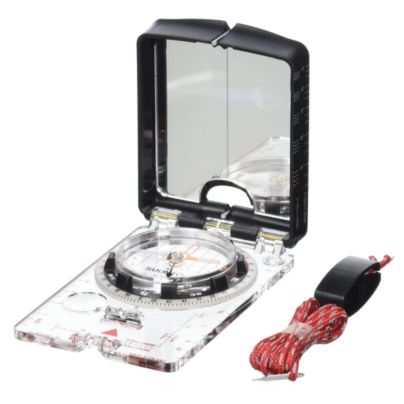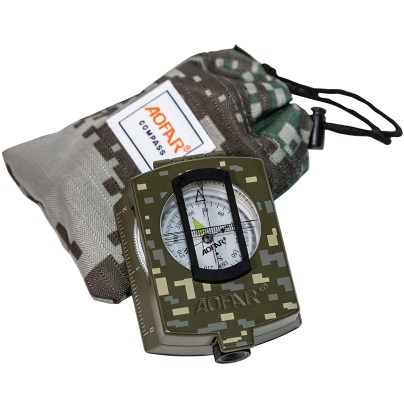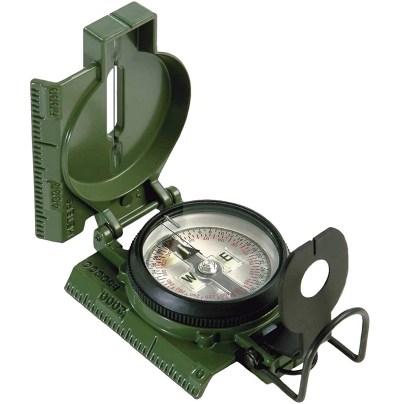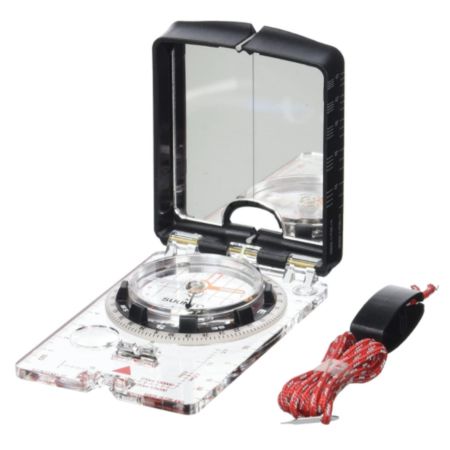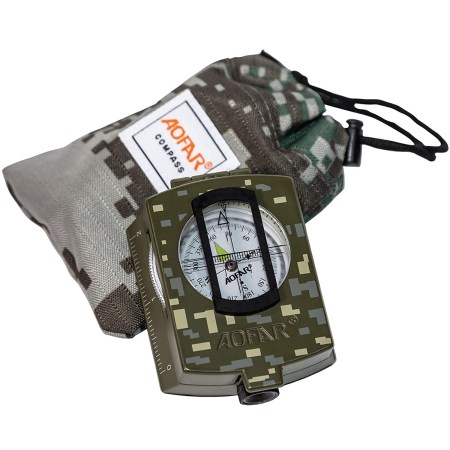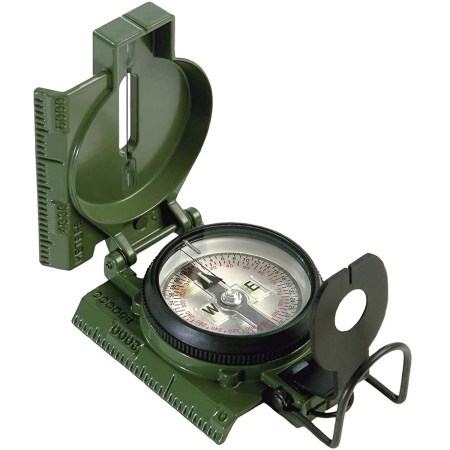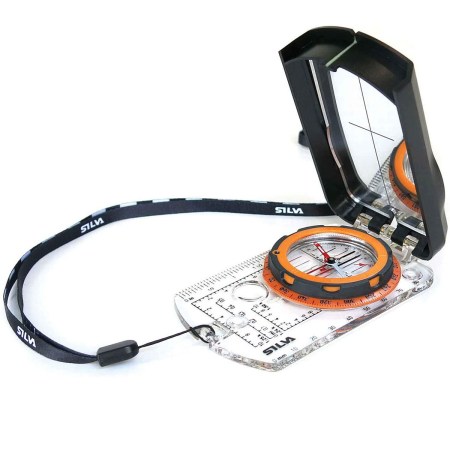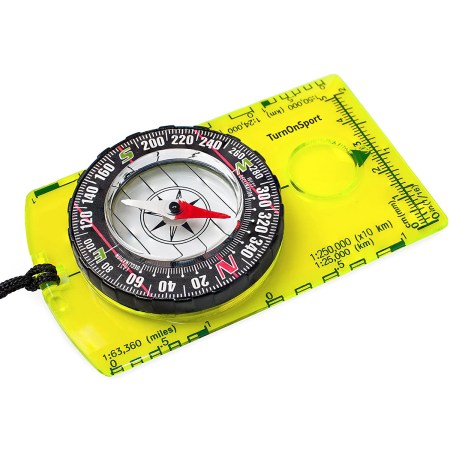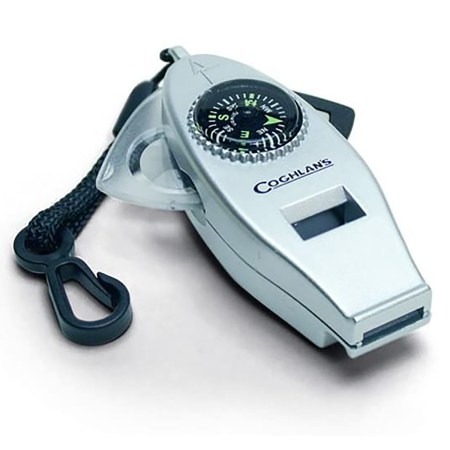We may earn revenue from the products available on this page and participate in affiliate programs. Learn More ›
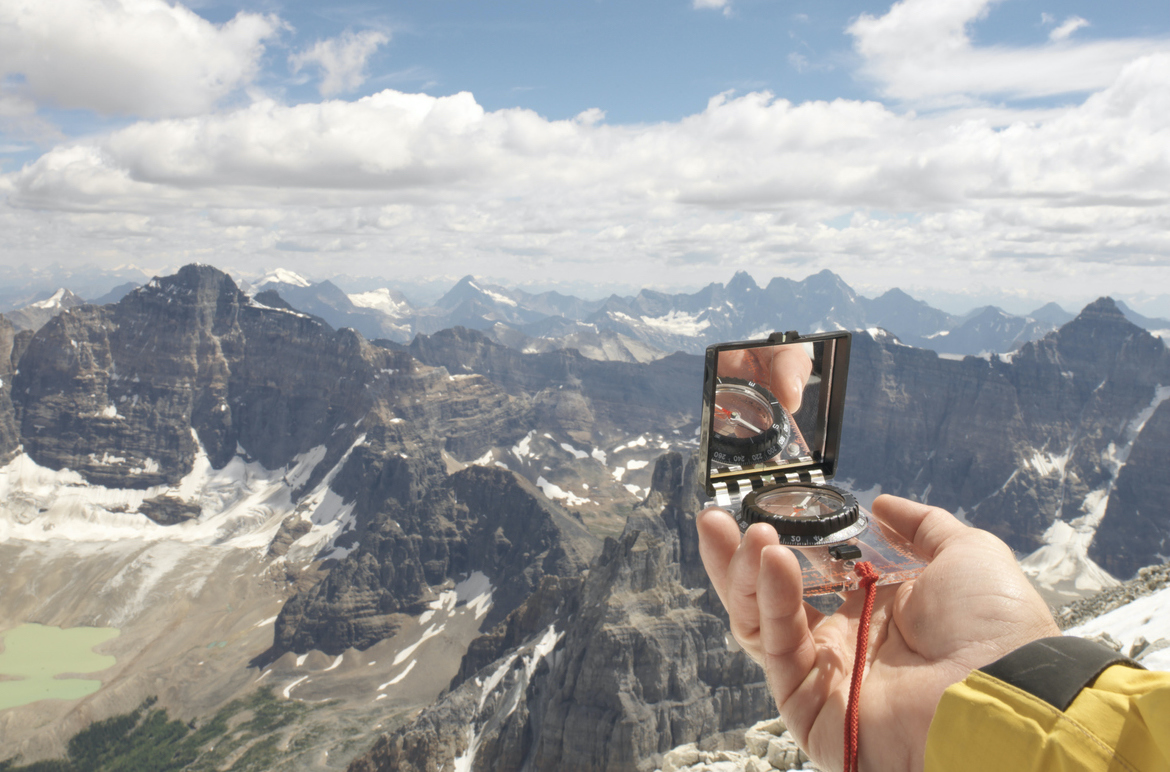
If you’re a hiker, hunter, survivalist, or other type of avid outdoorsman, safely and reliably navigating territory is a priority. Although technological innovations have granted the average consumer access to helpful tools like pocket radios and GPS, you don’t have to rely exclusively on battery-powered digital devices for extended outdoor adventures.
If you’re serious about effectively navigating the outdoors, a reliable and accurate manual compass can be a must-have addition to your camping gear. Read on to learn about some of the essential features to consider when selecting the best compass and discover some reliable and functional options in a variety of categories.
- BEST OVERALL: Suunto MC-2 Compass
- BEST BUDGET: AOFAR Military Compass AF-4580 Lensatic
- BEST MILITARY GRADE: Cammenga Official US Military Tritium Compass
- BEST FOR HIKING: Silva Ranger 2.0 Compass
- BEST FOR ADVENTURE RACING: TurnOnSport Orienteering Compass
- BEST FOR SURVIVAL: Coghlan’s Function Whistle
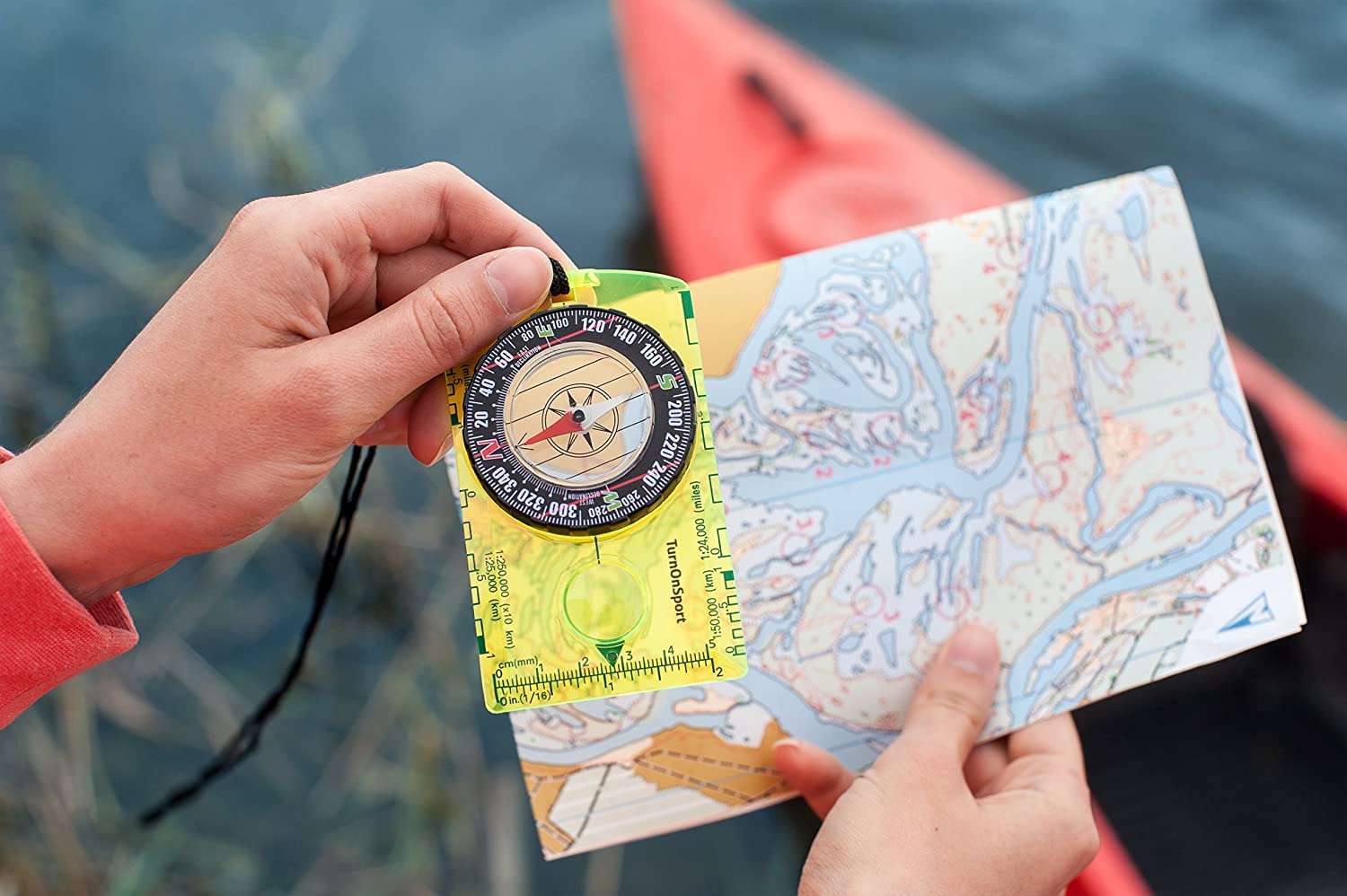
Types of Compasses
The first step in determining the best compass for your outdoor needs is learning about the two basic types of compasses. Knowing the differences between the two can help you understand the underlying principles of how a compass works and avoid possible confusion while you’re shopping.
Magnetic
Magnetic compasses are the most common type for personal use. Magnetic compasses use a magnetized needle; one end is pulled towards Earth’s magnetic North Pole and the other end is attracted to Earth’s magnetic South Pole. When the compass is held horizontally (parallel to the ground), the needle rotates on a low-friction pivot point until equilibrium is achieved between the two magnetic poles, and your directional orientation can be determined.
There are two types of magnetic compasses: baseplate and lensatic.
Baseplate compasses are simple to use and best for making quick navigational adjustments. They’re composed of a magnetized needle that sits on a compact baseplate that fits into the palm of your hand. And they have markings indicating the degrees of directional change.
Lensatic compasses are the type used by the military. They have a front cover that protects the dial from accidental damage like being dropped or stepped on. They also have a sighting wire that can be lined up with the sighting groove on the magnifying lens to sight far away landmarks. It’s similar to aligning the front and rear sights of a firearm when aiming at a target. This feature is especially useful for long distance navigation, as you can pinpoint landmarks for setting your travel direction with a higher degree of precision than with the single marking on a baseplate compass.
While lensatic compasses are typically more accurate, they’re generally harder to use than baseplate compasses, since they don’t have a declination adjustment and require an additional instrument like a protractor for determining declination. Lensatic compasses are also several ounces heavier than baseplate compasses, which will contribute to the dry weight of your pack. Lensatic compasses, often made with the military in mind, are considerably more weatherproof and durable than baseplate compasses.
Gyro
Gyrocompasses don’t rely on magnetism to determine directional orientation. Instead they use a fast-spinning disc that detects the Earth’s rotation to indicate the direction of true north. This makes gyrocompasses more accurate, mostly because other magnetic influences in the environment do not affect their readings. For this reason, gyrocompasses are commonly used in marine vessels, where the large metal mass and electrical equipment would grossly interfere with a magnetic compass’s reading.
Gyrocompasses are large and heavy, often measuring more than a foot tall and weighing more than 50 pounds. They also require electrical power to spin the disc used for their readings. For those reasons, they’re not used by individual outdoorsmen that require lightweight and manually operated navigation devices.
Features to Look for in the Best Compass
Within the category of magnetic compasses, there are several features that can impact a compass’s functionality and determine which situations and circumstances a compass is best suited for. Keep the following features and considerations in mind to see which magnetic compass fulfills your specific navigational needs.
Magnetized Needle
The magnetized needle is the most important component of a magnetic compass. Most magnetized needles are suspended in fluid and pivot on a low-friction bearing to allow the magnetized needle to easily point to magnetic north.
Some magnetic compasses use a global needle that will accurately point to magnetic north regardless of where in the world you’re located. Without a global needle, a magnetic compass needs to be calibrated to either the northern or southern hemisphere to account for the fluctuations in Earth’s unique magnetic field in those regions. Compasses with global needles are usually more expensive, but the extra cost might be worth it if you plan on using your compass around the world.
Declination Adjustment
Along with south and north magnetic poles, the Earth also has multiple layers of magnetized metal underneath its surface. The locations of these magnetic layers create variations of Earth’s magnetic field in those areas and impacts the difference between magnetic north and true north. To compensate for this difference, many compasses will allow you to adjust your declination, which is the variance in degrees between true and magnetic north. The map you use with your compass should list the magnetic declination of the area you will be navigating.
Not all local maps will list the magnetic declination, but topographic maps of your state are available from the United States Geological Survey (USGS) that list the declination. It’s important to realize that the Earth’s magnetic field is constantly changing, and the USGS updates its maps every three years to reflect this change. Having the most recent declination values on the map you’re using is helpful, so you should review your map’s adjustment measurements annually and purchase a new one when changes are made.
The method for making the declination adjustment will differ among compasses, but most require a small screwdriver or other tool for refined adjustments. Some compasses offer the convenience of toolless adjustment that can be turned with your fingers instead of a screwdriver, but at the cost of less refined adjustment capabilities.
High Resolution Bezel
A compass’s bezel (also called an azimuth ring) is a rotating ring that wraps around the entire circumference of the compass and is marked with degrees from 0 to 360. The bezel guides you toward a desired destination by allowing you to set the bezel marker in the exact direction you want to go in relation to magnetic north. For example, if you want to head 52 degrees southeast, or head in the direction of a landmark you picked out with your binoculars, you set the bezel marking to that direction. After you start moving in that direction, you monitor the bezel to ensure that you stay on course.
In conjunction with a declination adjustment, a bezel with high resolution markings of the smallest degree intervals will make it easier to navigate with a high degree of precision. Otherwise, you might diverge from your intended path.
Clinometer
Clinometers measure the vertical angle (level of steepness) of a slope, mostly for assisting skiers and mountaineers in assessing avalanche risk. The clinometer indicator is usually shaped like an arrow and moves freely inside the same liquid suspension as the magnetized needle, often directly below the needle.
Clinometers are typically only found on higher-end compasses. They aren’t necessary for most outdoor enthusiasts who don’t expect to encounter avalanche hazards on their journeys.
Luminescent Indicators
Navigating outdoors in the dark can be challenging enough, but it can be even more difficult if you can’t see the indicators on your compass. While you can use a headlamp or flashlight, luminescent indicators give you the ability to read your compass without any additional tools.
There are two primary types of luminescent indicators available: phosphorescent lights and tritium micro-lights. While neither one requires an external source of power, phosphorescent lights need to be charged by shining a bright light on them. The bright light is necessary to make them luminescent enough to use in low visibility conditions.
Tritium micro-lights stay illuminated at all times, and don’t require the assistance of a bright light prior to use. For this reason, tritium micro-lights are the most common type of luminescent indicators used by military personnel who need a compass with the highest level of visibility and functionality, regardless of the environmental lighting conditions.
Weatherproofing
Since compasses are mostly used in outdoor environments, it’s important that they’re designed to withstand any environmental hazard they may encounter. This can include water, heat, freezing temperatures, and dirt. Without adequate weatherproofing precautions, the fluid-filled needle housing could freeze or form bubbles that interfere with the needle’s function.
Excessive heat may melt a plastic baseplate, which may completely destroy it or distort some of the indicator markings. Heat may also cause the needle housing fluid to expand and damage the compass or impair the needle’s function. Fortunately, most fluid-filled needle housings use an alcohol medium that prevents freezing and heat expansion while minimizing bubble formation.
Most needle housings are also tightly enclosed to prevent moisture, dirt, or other contaminants from entering the housing. Some materials like aluminum are better at preventing damage to this seal than other materials like plastic. There’s no standardized weatherproof rating for compasses, so a compass’s resilience can vary considerably between manufacturers. The weatherproof rating can range from moderately water resistant to completely waterproof, up to a certain level of full submersion. Some also can be shock-proof and capable of performing in extreme heat and freezing conditions.
A compass needs a weatherproof rating that corresponds with the outdoor conditions you expect to encounter. Generally speaking, compasses that are used and vetted by military personnel will have the greatest weatherproof ratings.
Our Top Picks
With so many different features and considerations, it can be challenging to pick the right one for your specific needs. To help you navigate through the maze of available compasses on the market, consider the following top picks in several different categories.
Best Overall
Suunto MC-2 Compass
See ItSuunto’s MC-2 mirrored compass meets the navigational demands of an outdoor adventurer, from beginner to advanced. It offers a global magnetized needle for use in the northern and southern hemispheres, clinometer, 360-degree rotating bezel, luminescent indicators, and declination adjustment. If you don’t think you’ll need the global needle, Suunto also offers a model with a standard magnetized needle to use in the northern hemisphere at a reduced price point.
This compass comes with a lanyard for attaching it to your wrist, neck, backpack, or pants so it’s readily accessible for wherever you need it. The waterproof compass will stay safe and functional in the wettest conditions. The device includes a protective cover with a mirrored interior, and a built-in sighting hole for added precision. With so much value for the price, Suunto’s MC-2 compass is capable of pleasing both the novice and experienced outdoorsman.
Best Budget
AOFAR Military Compass AF-4580 Lensatic
See ItThis lensatic compass from AOFAR is made with both durability and accuracy in mind, so don’t be deceived by its low price point. It features a waterproof and shake-proof housing and comes with a waterproof pouch with attached lanyard for safe storage and transportation.
The only downside to this compass is that it doesn’t offer a declination adjustment and doesn’t have the same weatherproof rating of other military-grade compasses. Overall, it offers an incredible value given its functions and affordable price.
Best Military Grade
Cammenga Official US Military Tritium Compass
See ItIf you’re looking for a compass designed to withstand the harshest environmental conditions and still perform with the highest level of accuracy, Cammenga’s lensatic compass may be for you. It was built to military specifications (MIL-SPEC) to perform in any outdoor situation and features a rugged aluminum housing that’s waterproof, shock-proof, and dirt-proof.
Since it’s lunastic, the magnetic needle isn’t suspended in fluid that can be negatively impacted by fluctuations in temperature or altitude. Cammenga’s magnetized needle also meets MIL-SPEC standards of accuracy so you’ll have the most highly refined directional readouts possible. And its tritium luminescent indicators will stay illuminated without needing to be charged by an external light source.
Its main drawbacks are that it isn’t equipped with a global needle, has no declination adjustment, and is rather expensive. In addition to the up-front cost of this compass, there is the cost of an additional protractor for declination and use in the southern hemisphere. However, if you want a compass with the same level of accuracy and durability that the military counts on, Commenga’s lensatic compass is hard to beat.
Best For Hiking
Silva Ranger 2.0 Compass
See ItWhen you’re hiking long distances over rugged and unfamiliar terrain, it’s important to keep your bearings to avoid getting lost. To this end, Silva Ranger includes a sighting mirror that reduces the possibility of errors when moving from sighting at eye-level to waist-level when reading. The sighting mirror also doubles as a protective cover for the compass dial, since it flips down to enclose the top of the compass when it’s not in use.
Along with the sighting mirror, it features a declination adjustment, luminescent indicators, and a magnifying lens to help you read your map. The main drawback is that it’s unclear how weatherproof this compass is and whether the mirror could potentially break and shatter. All in all, the advantages a sighting mirror offers should make any serious hiker strongly consider this option.
Best For Adventure Racing
TurnOnSport Orienteering Compass
See ItIf you’re looking for a basic orienteering compass that’s durable enough for adventure racing, TurnOnSport’s mountaineering compass might be what you need. Its beauty lies in its simplicity, and it is a highly accurate and waterproof compass at an affordable price.
Although it doesn’t have a declination adjustment, it’s a feature that is probably unnecessary for basic orienteering on adventure racing terrain. However, it has a rotating bezel for staying on track throughout a course and a magnifying lens to easily read your map. At this price point, you’ll be hard-pressed to find a more durable and accurate adventure racing compass with all the basic and necessary features.
Best For Survival
Coghlan's Function Whistle
See ItWhen you’re preparing for a survival situation, you don’t want to be left without essential equipment that can keep you out of harm’s way. Thankfully, Coghlan’s compass was designed with outdoor survival in mind. This tool includes several survival components like a safety whistle, LED light, and signaling mirror.
This compass doesn’t feature a rotating bezel, declination adjustment, or many of the other common bells and whistles, so it may not be suited for the outdoorsman who regularly depends on navigation ability. However, the additional components you rarely see in other compasses, along with its ability to read pure magnetic north, might be all you need to stay safe and oriented in an emergency. It also can serve as a multifunction backup option.
FAQs About Compasses
If you’re new to the world of navigation and orienteering, you might be feeling overwhelmed by all the new terms and features. If you still have some lingering questions after reading this guide, the answers to some of the following frequently asked questions may provide greater clarity.
Q. What should a good compass have?
Generally speaking, a good compass will have an accurate magnetized needle, declination adjustment, and be reasonably weatherproof. However, your ideal compass’s features should depend on how you’ll use it and your experience level.
Q. What compass does the military use?
The military uses a compass built to meet military specifications (MIL-SPEC) for accuracy and durability in extreme weather conditions. In addition, the military exclusively uses lensatic instead of baseplate compasses, owing to their higher level of accuracy and ease of reading.
Q. How do I know if my compass is accurate?
You can test the accuracy of a reading from your compass against a digital GPS system using either a stand-alone device or one on your phone, which displays directional orientation, to see if it’s accurate.
Q. Why is my compass reading backward?
A backward reading is caused by a condition known as reverse polarity. Magnetic interference in your environment, most commonly caused by personal electronics like smartphones, can pull your magnetized needle in the wrong direction.
Q. How do you correct a compass?
If your compass is reading backward you will have to re-magnetize it with a strong magnet.
